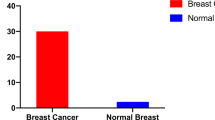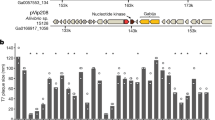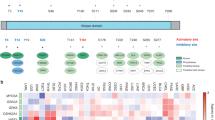Abstract
RECENT observations have again drawn attention to a possible viral aetiology for certain types of cancer. Among these observations are: the presence of RNA dependent DNA polymerase (reverse transcriptase) in human leukaemic cells1; the presence of viral particles in the milk of Parsi women of Bombay and the concurrent presence of reverse transcriptase in the same samples of milk that contain the virus particles2; the leukaemic transformation of engrafted marrow cells in vivo3; and the induction of lymphoma and leukaemia in non-human primates with Herpesvirus saimiri4,5. These observations suggest that for the “cure” of certain types of cancer, drugs with activity against oncogenic virus will have to be combined with currently used antitumour agents, or that interferon (or interferon inducers) with antiviral and anti-tumour activity will have to be used6,7. Another alternative would be to combine the essential moieties of antiviral agents with the necessary moieties of molecules having antitumour activity in the hope that the resulting compound would have both activities.
This is a preview of subscription content, access via your institution
Access options
Subscribe to this journal
Receive 51 print issues and online access
$199.00 per year
only $3.90 per issue
Buy this article
- Purchase on Springer Link
- Instant access to full article PDF
Prices may be subject to local taxes which are calculated during checkout
Similar content being viewed by others
References
Gallo, R. C., Yang, S. S., and Ting, R. C., Nature, 228, 927 (1970).
Schlom, J., Spiegelman, S., and Moore, D., Nature, 231, 97 (1971).
Fialkow, P. J., Thomas, E. D., Bryant, J. T., and Neiman, P. E., Lancet, i, 251 (1971).
Melendez, L. V., Hunt, R. D., Blake, J. B., and Garcia, F. G., Science, 171, 1161 (1971).
Ablashi, D. V., Loeb, W. F., Valerio, M. G., Adamson, R. H., Armstrong, G. R., Bennett, D. G., and Heine, U., J. Nat. Cancer Inst., 47, 837 (1971).
Adamson, R. H., Lancet, i, 398 (1971).
Adamson, R. H., J. Nat. Cancer Inst., 46, 431 (1971).
Eggers, H. J., Ikegami, M., and Tamm, I., Ann. NY Acad. Sci., 130, 267 (1965).
Caliguiri, L. A., and Tamm, I., Ann. NY Acad. Sci., 173, 420 (1970).
Stearns, B., Losee, K. A., and Bernstein, J., J. Med. Chem., 6, 201 (1963).
Adamson, R. H., Proc. Soc. Exp. Biol. Med., 119, 456 (1965).
Fishbein, W. N., Carbone, P. P., Freireich, E. J., Misra, D., and Frej, E. III, Clin. Pharm. Ther., 5, 574 (1964).
Adamson, R. H., Hart, L. G., DeVita, V. T., and Oliverio, V. T., Cancer Res., 28, 343 (1968).
Author information
Authors and Affiliations
Rights and permissions
About this article
Cite this article
ADAMSON, R. Biological Sciences: Hydroxyguanidine—a New Antitumour Drug. Nature 236, 400–401 (1972). https://doi.org/10.1038/236400a0
Received:
Issue Date:
DOI: https://doi.org/10.1038/236400a0
This article is cited by
-
The study of inhibition of DNA synthesis by hydroxyurea(s)
Proceedings / Indian Academy of Sciences (1999)
Comments
By submitting a comment you agree to abide by our Terms and Community Guidelines. If you find something abusive or that does not comply with our terms or guidelines please flag it as inappropriate.



